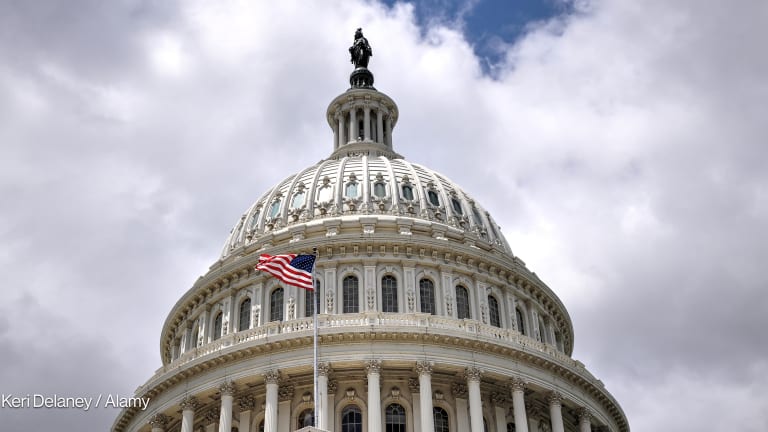
Not for the first time, the U.S. International Development Finance Corporation is feeling tension between its development mandate and foreign policy imperatives.
The latest example came in Congress when a version of a bill aimed at countering China, commonly known as the EAGLE Act — I’ll spare you the longer name — included a section that would allow DFC to invest in upper-middle-income and high-income countries for projects that “address key national security and economic interests.”
This is a preview of Devex Invested
Sign up to this weekly newsletter inside business, finance, and the SDGs, in your inbox every Tuesday.
The provision was struck down by an amendment from the committee late last month after an outcry from development advocates, who said it would distract the agency from its mandate. But the desire of some politicians to expand the agency’s scope seems to persist.
The bill passed out of committee with an amendment that would make it possible for DFC to make equity investments at scale and increase the total possible spending cap to $100 billion from its current $60 billion.
• What we learned: DFC is seen as the shiny new tool, and so everyone — from Congress to the White House — wants to use it to address their policy priorities, from climate finance to countering China to boosting investment in Caribbean nations.
• “The agency is being pulled in all sorts of directions,” a DFC official tells me anonymously. “We’re all things to all people, and no one really gets what we do.”
• Its new climate policy, as well as pressure to make more national security-related investments, could lead DFC to support gas projects in wealthier countries — even as it phases out funding for them in low-income nations with greater energy challenges, according to a Center for Global Development blog post .
• But maybe the issue is that the U.S. government doesn’t have the right tool for the types of investments it wants to make — such as those whose purpose is more national security than development. Several experts told me that a solution could be a new institution that invests with a national security mandate.
Read the full story: What is DFC's mandate? Debate over a bill turns up many answers
Yellen pushes MDBs on climate finance
U.S. Treasury Secretary Janet Yellen and White House climate envoy John Kerry met with multilateral development bank leaders last week to discuss how they could maximize private finance for climate, including by examining internal bank incentives and practices.
Yellen also encouraged the MDBs to increase their focus on climate adaptation and to support lower-income countries in reducing emissions and protecting ecosystems, according to the Treasury Department. The goal is to get the MDBs to more rapidly align with the Paris climate agreement.
The group is set to meet again in October to discuss “concrete plans” for the MDBs on climate.
Setting the standard
Fidelity International, a global asset manager that oversees about $787 billion, has said it will vote against the reelections of directors on the boards of companies that fall short of climate change and gender diversity standards, according to the Financial Times.
Though other asset managers have taken similar action, it would be an unusual move for Fidelity. The aim is to hold board members accountable for countries that are lagging on environmental, social, and governance issues, But will these board votes truly shape corporate behavior?
Investments of interest
• The International Finance Corporation is providing up to $3 million for Carao Ventures Fund I — its first investment in Central America through its Startup Catalyst program, which supports incubators, accelerators, and seed funds in emerging markets. Carao Ventures is the first venture capital firm in Central America.
• The Asian Infrastructure Investment Bank has made its first investment in sub-Saharan Africa. The $100 million loan will help the Rwandan government improve access to finance for businesses affected by COVID-19. Half of the total investment is expected to go to small- and medium-sized enterprises, with at least 35% going to women-owned or -managed businesses.









